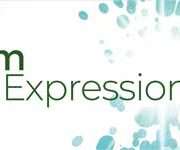Press Freedom Police Codex. The full text
The codex contains 8 guidelines for mutual respect. It has been made by ECPMF, together with Ossigeno, EFJ, Index, OBCT and SEEMO and it has been presented at Press Club, in Brussels.
On 4 December, 2019, the European Centre for Press and Media Frededom (ECPMF) presented at Press Club in Brussels, the Press Freedom Police Codex. The text has been created by ECPMF, together with the European Federation of Journalists (EFJ) and the associations Ossigeno per l’informazione, Index on Censorship, OBCT and SEEMO. It responds to the need to regulate the relation between information operators and law enforcement. The launch of the Codex aims to provide 8 guidelines to foster a constructive dialogue between the two parts and the production of standards on this matter.
The Codex formulates in 8 clauses how the police and journalists can work amicably together. The clauses are based on research into areas of conflict between the two professions from all over Europe. It addresses issues of police violence, surveillance, accreditation, protection of sources and confiscation of journalistic materials. With the launch of the Codex, ECPMF aims to provide guidelines, establish and continue a dialogue between journalists and the police, to help the two professions work together more smoothly.
The Belgian representative of the European Confederation of Police (EuroCOP), Peter Smets, commented on the Codex adding this: “Due to the increase of violence in our society, journalists and police officers face the same challenges. This is a wake-up call for better communication. At the end of the day, we all want to come home safely.”
The points are as follows:
1. Any violence by police staff against journalists is unacceptable;
2.Journalists have the right to gather information and police should protect them from any illegal interference, especially at demonstrations;
3. Journalists should have the right to identify individual police staff and to document and report on the work of the police forces;
4.Police are not allowed to erase footage, nor to confiscate journalists’ equipment without a proper warrant;
5.Journalists should not be criminalised, discriminated against nor blacklisted for their assumed political attitude;
6.Journalists should not be targeted by police surveillance;
7.If police harm, threaten or harass journalists, these actions must be condemned, investigated and made public by independent investigators;
8.Police should be trained and regularly updated on journalists’ rights.
The full Codex can be accessed here.
While
the
authors of the Codex
acknowledge that the relationship between journalists and the police
is difficult, it is important to build a dialogue to encourage mutual
respect, the upholding of human rights and an environment in which
press and media freedom can thrive.
“Everywhere you look you find the same problem: in the turmoil of protests, journalists are hindered in their work. Sometimes they are even attacked. The Press Freedom Police Codex is designed to give police and media professionals a clear set of guidelines on how to safeguard press and media freedom,” said ECPMF’s Managing Director, Lutz Kinkel. “We hope the clarity and practical usefulness of the Codex will help to minimise inappropriate clashes between police and journalists.”
For Ossigeno, Maria Laura Franciosi summarised the terms in which the problem arises in Italy, quoting some episodes, which have raised the problems to be faced.







Leave a Reply
Want to join the discussion?Feel free to contribute!